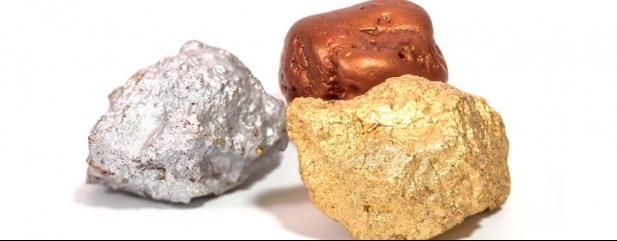Archived article
Please note that tax, investment, pension and ISA rules can change and the information and any views contained in this article may now be inaccurate.
The implications of big commodities rally for the miners

Commodities have had a wild ride this year, recording their fastest ever recovery from their fastest ever bust.
After the coronavirus pandemic various commodities took a major tumble. A World Bank report from April suggested energy commodities, like oil, natural gas and coal, were set to be 40% lower in 2020 than in 2019, with metal prices tumbling 13.2% on expectations of prolonged public health and economic crises.
But they have since bounced back with a vengeance, with most major commodities having recorded several week-on-week gains since March.
And gold, which was forecast to go 13.2% higher according to the World Bank, has actually jumped 27% as it hit new all-time highs, fuelled by a weakening US dollar, negative real interest rates and as investors have reached for its traditional safe haven qualities.
The main question however, is whether or not the surge in commodity prices is a real recovery, or just nations stockpiling ahead of another potential incoming downturn.
US corn prices for example surged in early July following production cuts, touching a three-month high of $3.50/bushel, but the real price driver was an order from China, which bought 1.93 million tonnes of corn in its biggest ever purchase and the third largest ever single-day sale in history.
Various reports have suggested China’s stockpiles of a range of commodities had been reducing, and so it could be the case that on a global scale a real recovery isn’t taking place after all but China is merely replenishing its supplies, particularly given the country is the biggest customer for cobalt, copper and iron ore, three metals which have had a strong rebound since March.
As for how price strength has impacted the FTSE 100 mining stocks and the income they traditionally provide, the picture varies according to what mix of commodities the miner produces.
Rio Tinto (RIO) increased its interim dividend by 3% for example to 155 US cents, having experienced stable iron ore prices and resilient sales of the commodity, reflected in an underlying EBITDA (earnings before interest, tax, depreciation and amortisation) margin of 47%. Rio and BHP (BHP) are two of the world’s biggest producers of iron ore.
Anglo American (AAL) on the other hand had to halve its interim shareholder payout to $0.28 per share, down 55% from $0.62% in 2019 as relatively stable copper, iron ore and PGM sales were not enough to offset a near collapse in demand in its diamond division, De Beers, as well as plummeting sales of thermal and metallurgical coal.
Pure play copper miner Antofagasta (ANTO) also decided in May to reduce its 2019 final dividend to 7.1 cents per share, from 16.2 cents previously, amid what at the time was a ‘lower copper price environment’.
Important information:
These articles are provided by Shares magazine which is published by AJ Bell Media, a part of AJ Bell. Shares is not written by AJ Bell.
Shares is provided for your general information and use and is not a personal recommendation to invest. It is not intended to be relied upon by you in making or not making any investment decisions. The investments referred to in these articles will not be suitable for all investors. If in doubt please seek appropriate independent financial advice.
Investors acting on the information in these articles do so at their own risk and AJ Bell Media and its staff do not accept liability for losses suffered by investors as a result of their investment decisions.

 magazine
magazine








